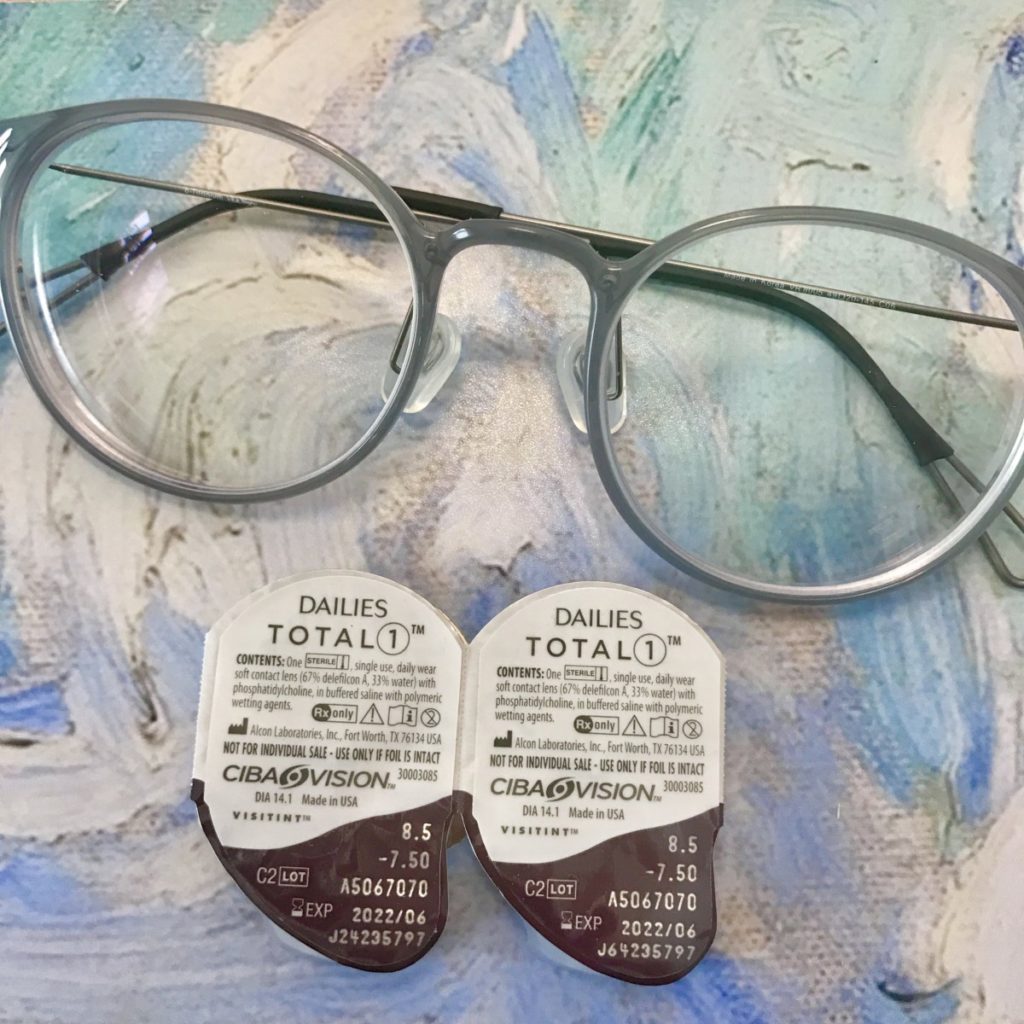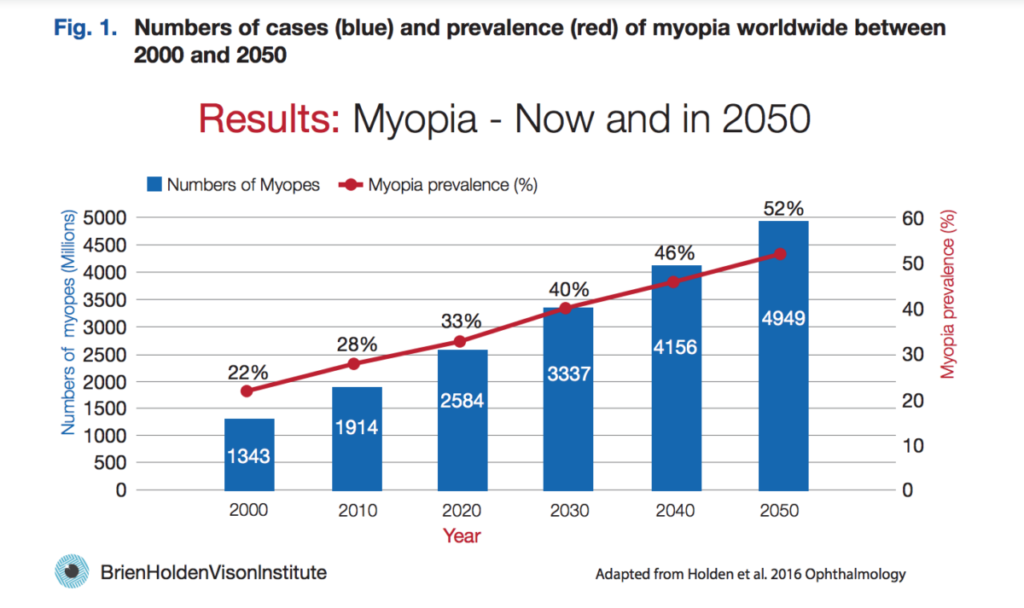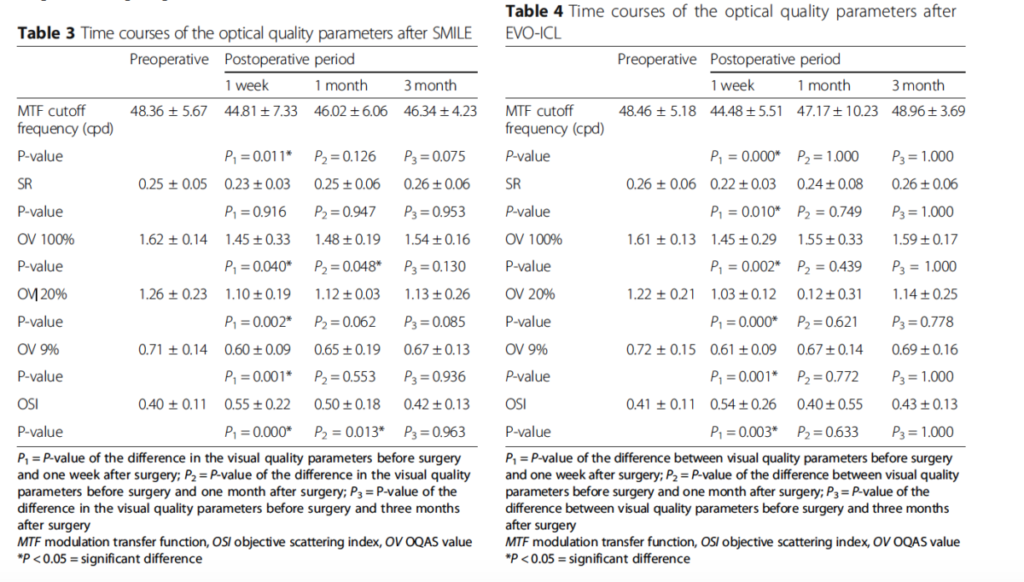Myopia is predicted to be affecting 33% population worldwide by 2020 (WHO,2016). As the daughter of both high myopia parents, I was unfortunately diagnosed as nearsighted in second grade and have been wearing my glasses (sometimes contact lenses) ever since. Growing up, I have witnessed more and more friends starting to have blurred vision and later prescribed with glasses. Suffering from myopia connects us better by bringing us many troubles that others would not share: we dislike steam, feel insecure around the poolside, find drizzle annoying when it lands on glasses, just to name a few. It wasn’t until recently that I found many peers around me have their vision cleared up by receiving surgeries. As mentioned in our BIOL-190 class, there are different kinds of vision correction surgeries, each fitting patients of different conditions. Becoming interested in this topic, I decided to have a closer look at the three common types of vision correction surgeries: LASIK (Laser-Assisted In Situ Keratomileusis), SMILE (Small Incision Lenticule Extraction), and IOL (Implantable Collamer Lens).


According to WHO, myopia is defined as “a condition in which the spherical equivalent objective refractive error is ≤ –0.50 diopter (–0.50 D) in either eye”, and high myopia is defined as “a condition in which the spherical equivalent objective refractive error is ≤ –5.00 D in either eye” (WHO,2016).
As we learned from class, myopia refers to a situation in which the light through the eyes is focused in front of the retina (Hornbeak DM, Young TL., 2009). Glasses and contact lenses for myopia, usually concave lenses, diverge light to compensate for the refractive error, moving the focal point further to the right spot. Vision correction surgeries either reshape patients’ cornea or implant permanent lens, which allows patients to see clearly without external aids. Both LASIK and SMILE are laser refractive surgeries for altering the shape of the cornea itself, which are irreversible since they all “do subtraction” on patients’ eyes. ICL is a phakic procedure by implanting an artificial lens, and no part of a patient’s natural lens is removed, meaning the surgery is reversible. The duration of all three operations is less than 30 minutes.
While LASIK and SMILE are both operations using laser technology, they have great differences. According to UCLA laser refractive center, in LASIK surgery, two lasers are used: the first is to create a flap of tissue in the cornea, and the second is to reshape the cornea. After that, the tissue flap is replaced down, and as it heals, the patient may go through 4-5 hours of burning or tearing but can have an excellent view the next day. However, not every patient is eligible for LASIK surgery, especially for those who have thin cornea or require higher corrections (patients of high myopia). Alternatively, SMILE may be a fit for them. SMILE uses a specific laser called VisuMax, creating a disc shape tissue at the cornea, meanwhile making a small incision of 3 millimeters. The surgeon then accesses the disc tissue through the incision and removes it from the cornea, causing the cornea to flatten at the desired amount. Compared to LASIK, SMILE brings less biomedical effect on the cornea, is viewed as safer for higher corrections, and has a shorter duration of burning or tearing and lower risk of dry eye (Mitra Nejad, MD, UCLA Laser Refractive Center, 2020).
ICL surgery is proven to be the safest for all corrections, but because it has a higher cost, it is mainly for patients with high myopia. Then here comes a question: Which is more effective in treating high myopia? SMILE or ICL?
In the research article Comparison of visual quality after EVO-ICL implantation and SMILE to select the appropriate surgical method for high myopia, the Department of Ophthalmology of Nanjing Drum Tower Hospital Clinical, China tracked the surgery results of 48 eyes underwent ICL, and 48 eyes underwent SMILE, each with high myopia (− 6.25 to − 10 D). They used OQAS(Optical Quality Analysis System)™ II to perform the optical quality and objective intraocular scattering measurements and fount out that “the OQAS II values (OV 100%) one week and one month after surgery and the modulation transfer function (MTF), OV 20% and OV 9% values one week after surgery in the SMILE group were lower than the respective preoperative values. The objective scatters index (OSI) value increased one week as well as one month after surgery compared with the preoperative values. The MTF cut-off value of the SMILE group was lower than that of the EVO-ICL implantation group three months after surgery.” Thus, they came up with the conclusion that “For patients with high myopia, the postoperative visual quality of EVO- ICL implantation was slightly better than that of SMILE.”(Qin Qin, Lianyun Bao, Liping Yang, Zifang He and Zhenping Huang, 2019)

Qin Qin, Lianyun Bao, Liping Yang, Zifang He & Zhenping Huang: Comparison of visual quality after EVO-ICL implantation and SMILE to select the appropriate surgical method for high myopia. BMC Ophthalmology 19, 21 (2019)
However, while now this article seems like ranking the surgeries, for each individual patient, it’s important to have eyes carefully examined and listen to what the doctor recommends.
It’s surprising yet amazing how the development of medical technology can have a huge impact on our health and life. My aunt received her IOL (similar to ICL) surgery ten years ago and she often told me that, as a severe myopia patient for 35 years, she had always felt unbelievable that one day she would take off her heavy glasses and see things clearly. The surgery is surely life-changing, but while many people, especially young adults, would like to rush to receive their surgeries, it’s important to find a safe and professional hospital and be knowledgeable about the surgeries.
Work cited:
1)Hornbeak DM, Young TL. Myopia genetics: a review of current research and emerging trends. Curr Opin Ophthalmol. 2009;20(5):356–62.
2)Video: Laser Refractive Surgery: How is SMILE different from LASIK and PRK? | Mitra Nejad, MD. UCLA Stein Eye Institute, Cataract and Refractive Surgery Division. 2020
3)Qin Qin, Lianyun Bao, Liping Yang, Zifang He & Zhenping Huang: Comparison of visual quality after EVO-ICL implantation and SMILE to select the appropriate surgical method for high myopia. BMC Ophthalmology 19, 21 (2019)
Your blog post is very educational as I notice that more and more people are getting myopia nowadays and I am the only one in my family who does not have myopia. I like that you include the research graphs to demonstrate how common myopia is and the comparison of visual quality after EVO-ICL implantation and SMILE surgery, which strengthen the article.
Hi Sherry, what an interesting and educational blog! I’m also a daughter of high myopia parents, so I can totally relate to all the inconveniences of glasses that you talked about in your post. Recently, I’m also considering vision correction surgeries, so reading your blog definitely helps me get to know more about the types and details of these surgeries. Another concern of mine is the possible sequel of the surgeries, so maybe I will do more research before making the final decision. I can’t agree more that careful examination is really important, and I might start by finding a safe and professional hospital!